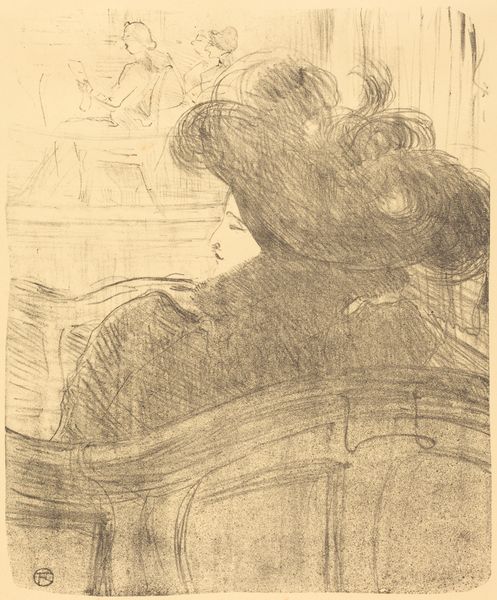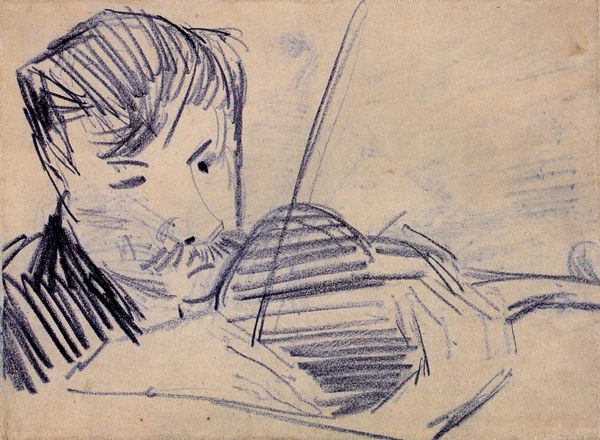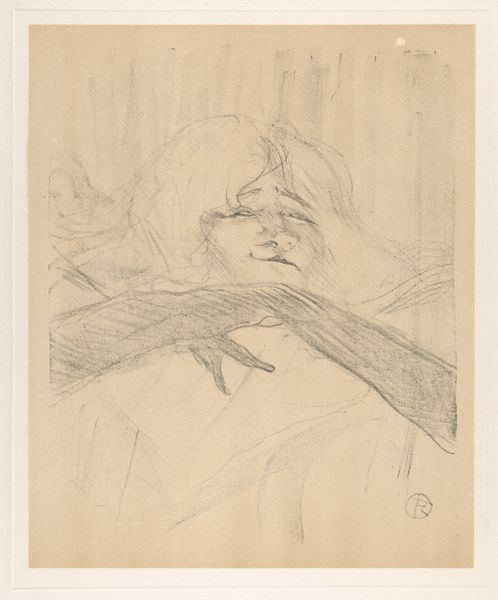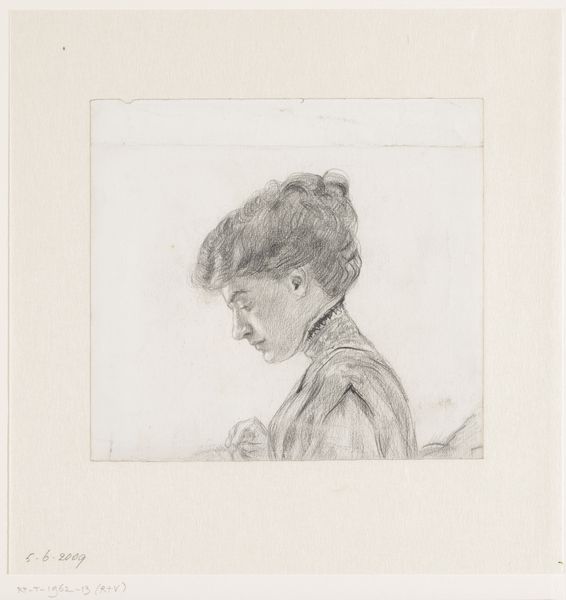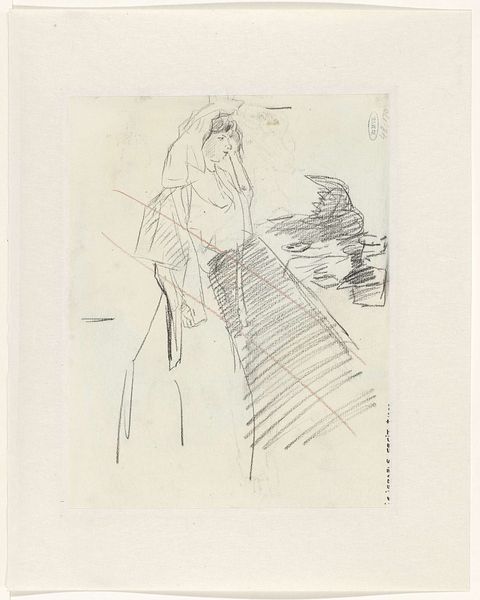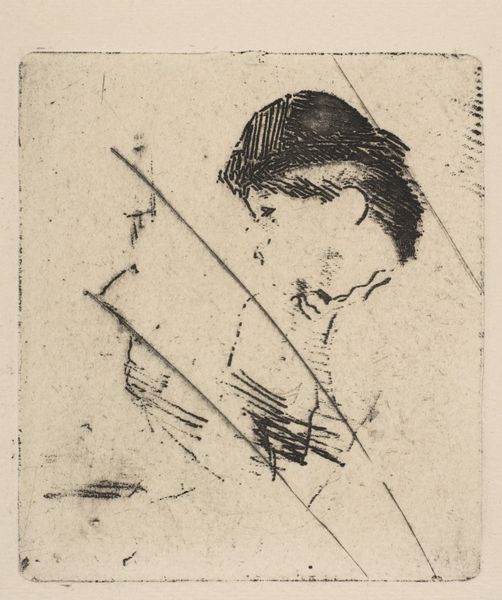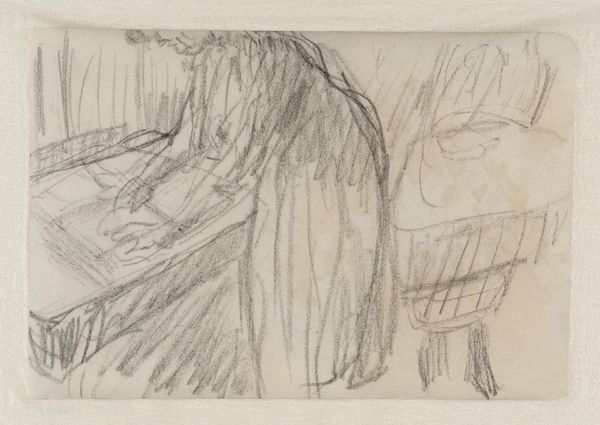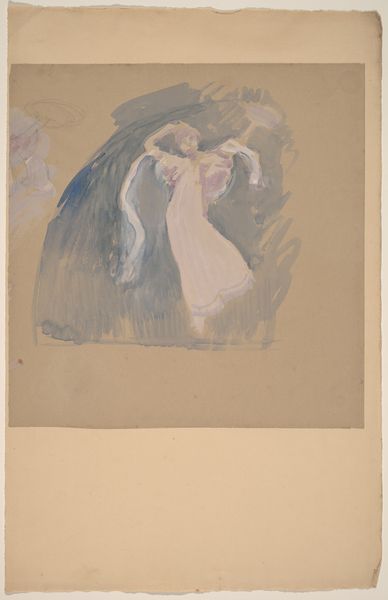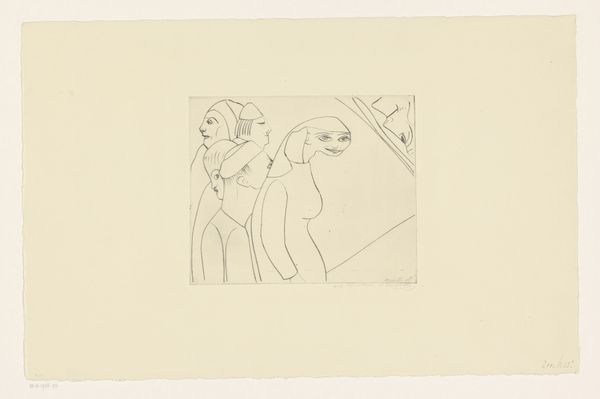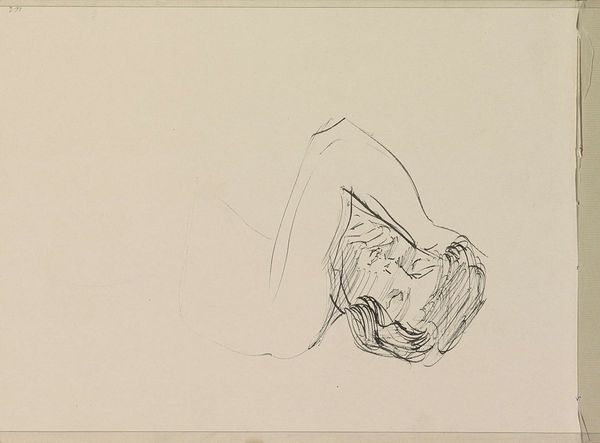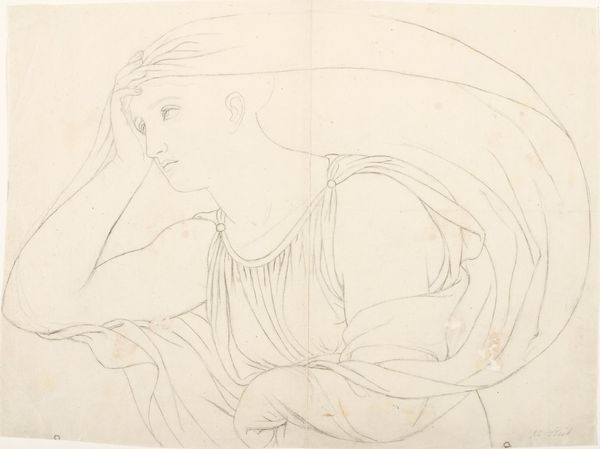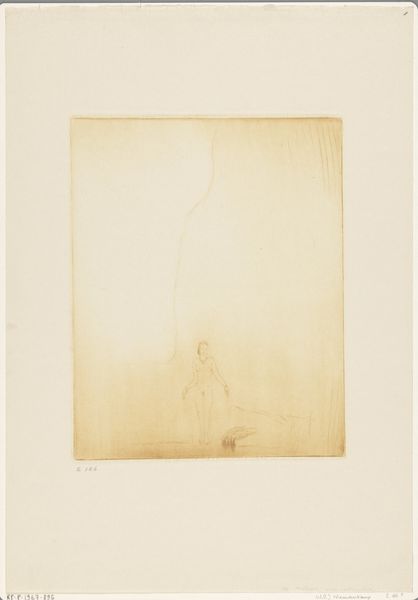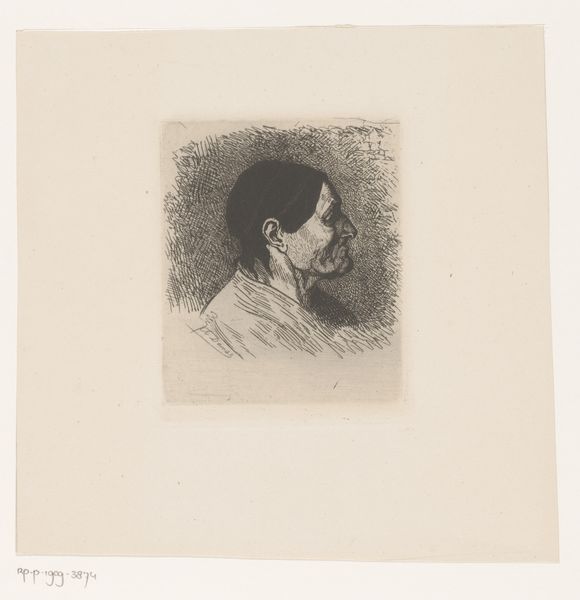
drawing, lithograph, print, paper
#
portrait
#
drawing
#
art-nouveau
#
lithograph
# print
#
figuration
#
paper
Dimensions: 10 1/4 x 15 9/16 in. (26.04 x 39.53 cm) (image)
Copyright: Public Domain
Curator: Alexandre-Louis-Marie Charpentier's lithograph, "Girl with a Violin," created in 1894, offers a striking portrait rendered with subtle, evocative detail. Editor: My immediate impression is of delicate stillness. The limited palette lends the image a dreamlike quality. The sparseness in coloring directs all attention to line, particularly in rendering the figure. Curator: Yes, the subtle coloration really draws attention to the symbols here. Music, especially represented through the violin, carries with it layers of meaning – harmony, emotional expression, and even, traditionally, a connection to the divine. I notice how the girl herself is framed almost as an extension of the instrument. Do you agree? Editor: Indeed. The almost seamless merging of her figure with the violin’s contours highlights the formal relationship between them. We see how Charpentier creates rhythm through repeated curves. Look at the echo in the instrument and the hair. Moreover, the almost monochromatic nature, especially in this particular work on paper, elevates line over color; it is as though a study of tonal arrangement in forms of draftsmanship. Curator: It makes you think about memory. This is more than a portrait of an individual; it becomes representative of musicality, youth, and the transmission of culture through art. Lithography, a process involving a stone and printing, adds another layer, literally pressing an image of art into a medium where, potentially, the image is repeatable over and over. Does this suggest cultural memory to you? Editor: Definitely. Repetition underscores the interplay between uniqueness and replicability, a characteristic paradox found in many prints from the Art Nouveau movement, but look closely at how, through his mark making, he achieves an aesthetic that's quite radical for its time, reducing forms to essentials and exploiting the limitations of color for compositional harmony. The composition seems to emerge directly from the qualities inherent in its medium. Curator: The choice of the young girl also impacts how we look at the symbol. This piece almost feels as though the artist sees something pure and hopeful in youth that perhaps might be absent from a picture with an elder. Editor: Yes, a powerful distillation of form that transcends mere representation and ventures into the realm of resonant visual poetry. It prompts reflection. Curator: Indeed, something truly memorable in how it touches on both the visual and symbolic language of its time.
Comments
minneapolisinstituteofart over 1 year ago
⋮
Among the quieter revelations in L'Estampe originale was this experimental relief print, which mimics in paper what sculptor Alexandre Charpentier had been doing in his portrait medallions. The modest subject-lost in her playing, hair not quite in place-seems to punctuate the paper with each attack of her bow. The print also heralds Charpentier's pioneering contributions to Art Nouveau, evident in the embossed floral backdrop. He used a separate intaglio plate, uninked, to emboss the underlying design.
Join the conversation
Join millions of artists and users on Artera today and experience the ultimate creative platform.
